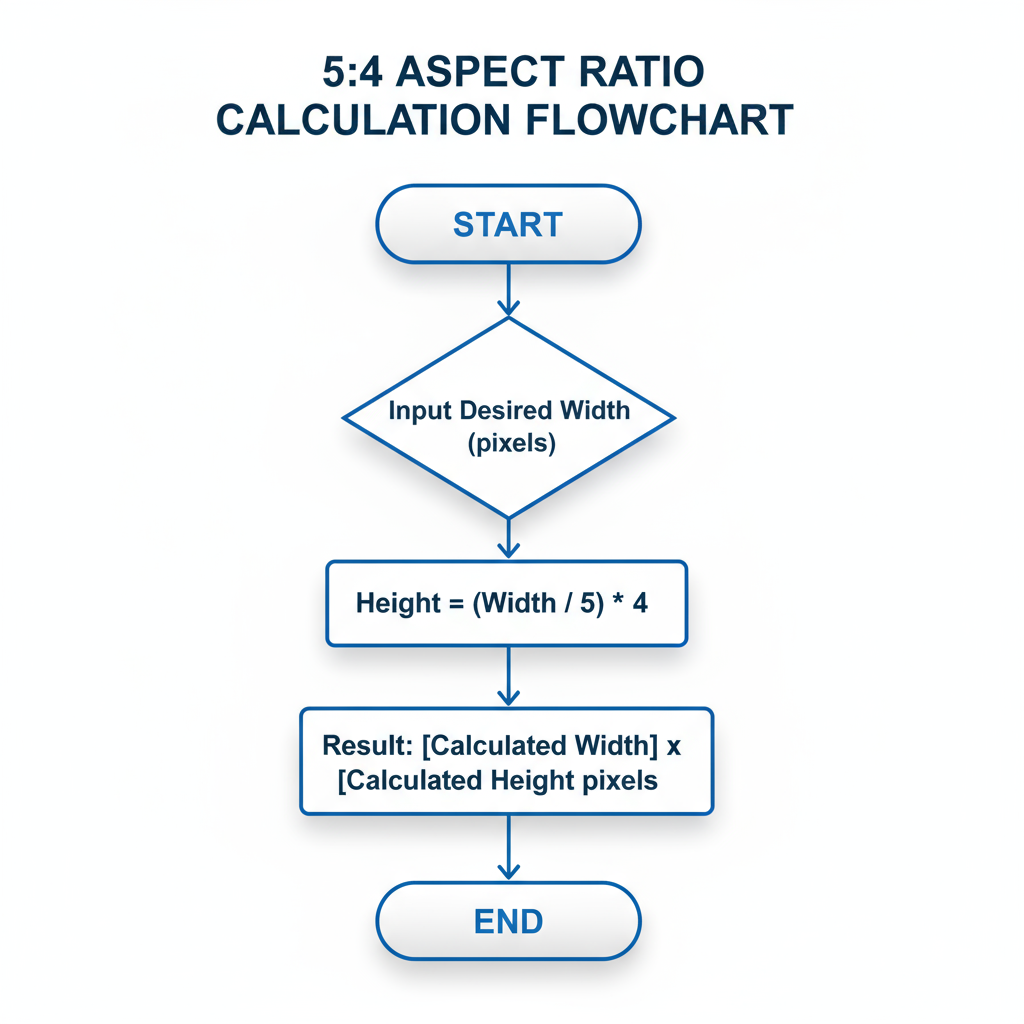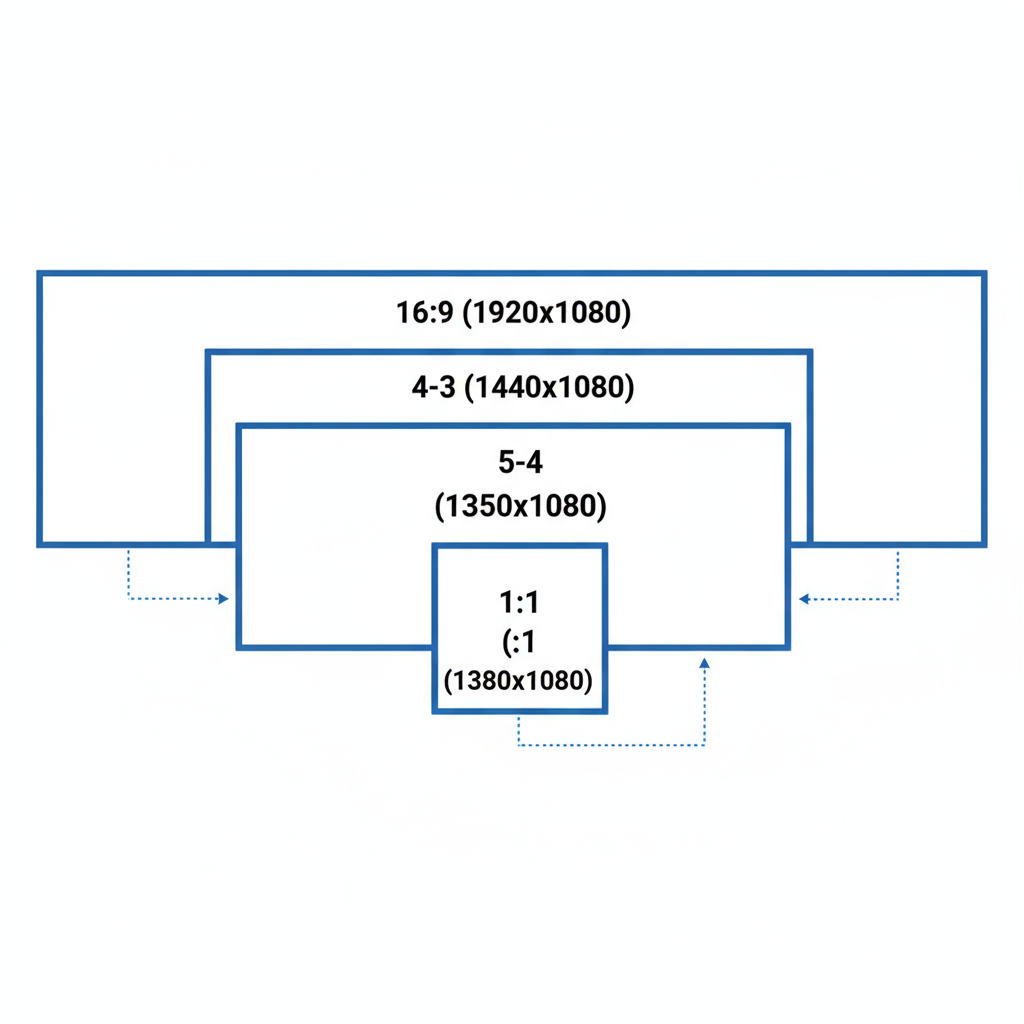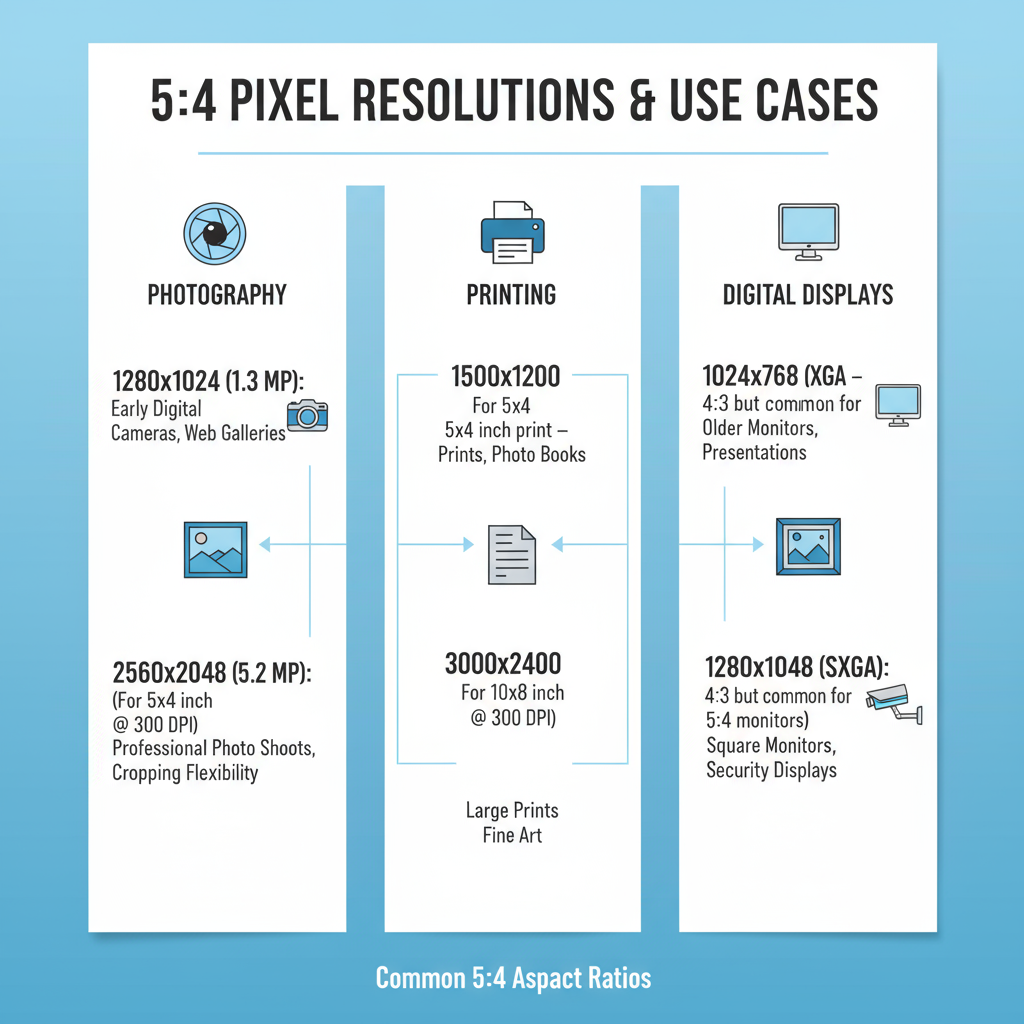5 4 Aspect Ratio in Pixels Explained with Examples
Learn what the 5:4 aspect ratio means in pixels, common dimensions, differences from other formats, and tips for using it in photography and design.

Understanding the 5:4 Aspect Ratio in Digital Media
The 5:4 aspect ratio in pixels is a classic proportion still relevant in photography, videography, graphic design, and even print work. It describes the relationship between a visual’s width and height, ensuring content remains balanced and correctly displayed across devices or platforms. This guide covers what the ratio means mathematically, common sizes, comparisons to other formats, and practical tips for using it effectively.
Aspect ratios impact aesthetics, usability, and performance by determining how an image or video fills the screen or print area without distortion. Whether you’re producing media for legacy displays, professional prints, or artistic projects, knowing how to work with 5:4 can help you achieve the desired visual impact.

---
What Does the 5:4 Aspect Ratio Mean Mathematically?
The 5:4 aspect ratio means that for every 5 units of width, there are 4 units of height. Mathematically:
Aspect Ratio Factor = Width ÷ Height
5:4 = 1.25 (width is 125% of height)If your image width is 1000px, the height should be:
Height = Width ÷ 1.25 = 800pxThis proportion produces a slightly rectangular, nearly square format — common in older computer monitors and traditional prints.
---
Common Pixel Dimensions for the 5:4 Aspect Ratio
Matching pixel dimensions to the 5:4 ratio avoids distortion. Typical examples include:
| Width (px) | Height (px) | Usage Example |
|---|---|---|
| 1280 | 1024 | Old SXGA monitors |
| 800 | 640 | Web graphics |
| 500 | 400 | Blog images |
| 2500 | 2000 | Professional photography |
All these sizes maintain a 1.25 width-to-height ratio, ensuring visual consistency.
---
How 5:4 Differs from Other Aspect Ratios
The 4:3 ratio was standard for older TVs, while 16:9 dominates modern widescreens. Compared to these:
- 5:4 vs. 4:3: Slightly taller, providing more vertical space — often preferred in portrait formats.
- 5:4 vs. 16:9: Much narrower, better suited for vertical subjects but less cinematic.

---
Practical Use Cases for the 5:4 Aspect Ratio
Applications of 5:4 include:
- Photography: Ideal for studio portraits and product shots with symmetrical framing.
- Displays: Used in legacy monitors and specialized equipment.
- Printing: Matches classic photo paper sizes such as 10×8 inches.
- Art Projects: Offers balanced framing that feels square-like but remains rectangular.
---
Calculating 5:4 Pixel Dimensions for Any Size
If you know one side of your design, calculate the other easily.
From width to height:
Height = Width × (4 ÷ 5)From height to width:
Width = Height × (5 ÷ 4)Example for width 1200px:
Height = 1200 × 0.8 = 960pxSuch formulas simplify sizing in spreadsheets, design tools, or scripts.
---
Pros and Cons of the 5:4 Ratio
Pros:
- Balanced for portrait-oriented work.
- Fits many print formats without cropping.
- Legacy-friendly for older screens.
Cons:
- Not optimized for modern widescreens.
- Needs adaptation for certain social media formats.
---
Compatibility Issues with Modern Devices and Social Media
Most modern devices prefer 16:9 or ultra-wide ratios. Posting 5:4 content on Instagram, Facebook, or YouTube may lead to:
- Auto cropping
- Added borders
- Reduced impact from scaling
Instagram’s portrait posts (e.g., 1080×1350px) resemble but are slightly taller than true 5:4.
---
Tips for Resizing and Cropping to Maintain the 5:4 Ratio
Keep 5:4 intact while editing with these approaches:
- Use locked aspect ratio tools for non-destructive crops.
- Compose shots intentionally in 5:4.
- Add borders/padding for incompatible formats.
- Batch-process in scripts to save time.

---
Tools and Software for Fast Aspect Ratio Conversion
Software that supports 5:4 adjustments:
- Photoshop / GIMP: Lock aspect ratio when cropping.
- Canva / Figma: Easy ratio-based templates.
- FFmpeg: Command-line video resizing.
- ImageMagick: Batch conversion for photos.
Example with ImageMagick:
convert input.jpg -resize 1280x1024^ -gravity center -extent 1280x1024 output.jpgThis enforces a 5:4 output while centering your image.
---
Key Takeaways and Aspect Ratio Selection Tips
- 5:4 aspect ratio in pixels means width = height × 1.25.
- Ideal for portraits, product shots, and certain prints.
- Less common on new devices; may require adaptation.
- Plan early to match final display needs and prevent distortion.
Choosing the right aspect ratio — whether 5:4, 4:3, or 16:9 — ensures your work looks professional across media. For balanced, vertical-friendly visuals, 5:4 remains a solid choice.
---
By mastering the 5:4 aspect ratio in pixels, you can design, crop, and resize content that preserves its intended composition across devices, prints, or online platforms. Start applying this format to your next project for timeless, balanced visuals.




